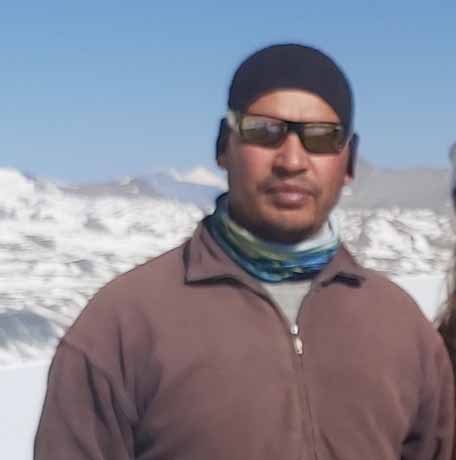Tucked away in the rain-shadow of the Himalayas, Mustang remains one of Nepal’s most enigmatic and awe-inspiring regions. Once a forbidden kingdom, this remote land was closed to outsiders until 1992, preserving its ancient Tibetan-influenced culture, dramatic landscapes, and spiritual heritage. Today, Mustang offers a rare opportunity to journey into a world untouched by time—a place where cliffs whisper legends, monasteries guard centuries-old secrets, and every trail leads to discovery.
Ride Through a Timeless Landscape
Embarking on a biking expedition through Mustang is like riding through a living museum of geology and history. The terrain is raw and elemental—towering cliffs carved by wind and water, deep canyons that echo with silence and barren plateaus that stretch endlessly beneath cobalt skies. The trails wind through ochre-colored valleys and past surreal rock formations, offering a thrilling challenge for adventure seekers.
Each turn reveals a new vista: the snow-capped peaks of Annapurna and Dhaulagiri loom in the distance, casting long shadows over the land. The air is crisp, the silence profound. Whether you’re navigating the rugged trails of Kagbeni or ascending toward Lo Manthang, the capital of Upper Mustang, the ride is both physically exhilarating and spiritually grounding.
Culture Rooted in Tibetan Tradition
Mustang’s cultural tapestry is deeply woven with threads of Tibetan Buddhism. The region was once part of the ancient Kingdom of Lo, and its people still speak a dialect of Tibetan and follow customs that date back centuries. Villages like Tsarang and Lo Manthang are fortified with stone walls and adorned with prayer flags that flutter in the mountain breeze.
Locals wear traditional chubas and greet visitors with warm smiles and a cup of butter tea. Life here is simple yet profound—rooted in community, spirituality, and reverence for nature. As you interact with the Mustang people, you’ll find a quiet resilience and a deep pride in their heritage.
Monasteries and Sacred Spaces
Mustang is a sanctuary of sacred architecture. Ancient monasteries—some over 800 years old—dot the landscape, each a repository of spiritual wisdom and artistic mastery. Gompas like Thubchen and Jampa Lhakhang in Lo Manthang house intricate frescoes, thangka paintings, and statues of deities that reflect the region’s deep Buddhist roots.
One of the most remarkable sites is the Chhoser Cave Monastery, carved into a cliffside and filled with meditation chambers and relics. These monasteries are not just places of worship—they are living institutions where monks chant mantras, perform rituals, and preserve the teachings of the Buddha.
Festivals That Ignite the Soul
Time your visit with one of Mustang’s vibrant festivals, and you’ll witness the region come alive with color, music, and spiritual energy. The Tiji Festival, held in May, is the most iconic celebration. It reenacts the myth of Dorje Jono, a deity who defeated demons to save Mustang from destruction. Monks perform masked dances, villagers gather in traditional attire, and the air buzzes with devotion and joy.
In August, the Yartung Festival brings horse racing, archery, and communal feasting to the highlands. It’s a celebration of vitality and unity, where locals and visitors alike revel in the spirit of Mustang. The Losar Festival, marking the Tibetan New Year, is another deeply cherished event, filled with prayers, offerings, and family gatherings.
A Culinary Journey in the Mountains
Mustang’s cuisine is a reflection of its high-altitude lifestyle and cultural fusion. The legendary Thakali Dal-Bhat is a staple—steamed rice served with lentil soup, seasonal vegetables, pickles, and meat. It’s hearty, flavorful, and nourishing after a long day on the trail.
Momos, the beloved dumplings, are filled with yak meat or vegetables and served with spicy chutneys. Thukpa, a Tibetan noodle soup, warms the soul on chilly evenings. For something truly local, try Dhido, a traditional pudding made from buckwheat or millet, often paired with gundruk (fermented greens) and yak cheese.
The food is not just sustenance—it’s a celebration of Mustang’s agricultural heritage and the ingenuity of its people. Meals are often shared communally, accompanied by laughter, stories, and the occasional sip of local raksi (homemade liquor).
Hospitality That Feels Like Home
Despite the region’s ruggedness, Mustang’s people offer a warmth that softens every journey. Guesthouses and homestays provide cozy accommodations, often decorated with traditional motifs and stocked with homemade treats. Hosts go out of their way to make travelers feel welcome, sharing tales of the land and inviting you into their daily lives.
Whether you’re sipping tea with a local elder or joining a family for dinner, the hospitality in Mustang is heartfelt and genuine. It’s this human connection that often leaves the deepest impression on visitors.
A Journey beyond the Ordinary
Exploring Mustang is not just a physical adventure—it’s a spiritual and cultural odyssey. It’s a place where the landscape speaks in silence, where ancient traditions thrive, and where every moment feels timeless. From the thrill of biking through dramatic terrain to the serenity of chanting monks in candlelit monasteries, Mustang offers a rare kind of magic.
For travelers seeking more than just a destination—for those who crave meaning, connection, and wonder—Mustang is a revelation. It’s not just a hidden kingdom. It’s a living story, waiting to be told.
